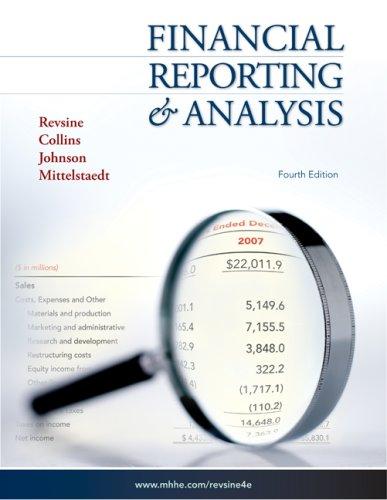Question:
Refer to the 2006 General Electric Retiree Health and Life Benefits Footnote appearing in Exhibit 14.8.

Required:
1. Reconstruct the journal entries that GE would have made in 2006 to record the effects of its pensions. Assume that the "authors' pro forma" amounts were on its balance sheet in 2005. Also, assume that the "other" decrease in PBO of $(32) is treated as an actuarial gain.
2. Explain how GE's health and life benefit plans affected its OCI account for 2006.
Transcribed Image Text:
EXHIBIT 14.8 Ceneral Elecgic Complur Edited, Condensed 2006 Annual Report Retiree Health and Life Benefits Footnote We sponsor a number of retiree health and life insurance benefit plans (retiree benefit plans). Principal retiree benefit plans are discussed below; other such plans are not significant individu ally or in the aggregate. We use a December 31 measurement date for our plans. PRINCIPAL RETIREE BENEFIT PLANS provide health and life insurance benefits to em- ployees who retire under the GE Pension Plan with 10 or more years of service. Eligible retirees share in the cost of healthcare benefits. Effective January 1, 2005, we amended our principal re- tiree benefit plans to provide that, upon retirement of salaried employees who commenced service after that date, such retirees will pay in full for their participation in the GE retiree health benefit plans. These plans cover approximately 240,000 retirees and dependents.... The effect on operations of principal retiree benefit plans is shown in the following table. ($in millions) Expected return on plan assets Service cost for benefits earned 2006 2005 2004 $(127) $ (138) $(149) 2291 243 210 Interest cost on benefit obligation 455 507 518 Prior service cost 363 326 298 Net actuarial loss recognized 64 70 60 Retiree benefit plans cost $ 984 $1,008 $ 937 The discount rates at December 31 were used to measure the year-end benefit obligations and the earnings effects for the subsequent year. Actuarial assumptions used to determine benefit obligations and earnings effects for principal retiree benefit plans follow December 31 2006 2005 2004 2003 Discount rate 5.75% 5.25% 5.75% 6.00% Compensation increases 5.00 5.00 5.00 5:00 Expected return on assets i 8.50 8.50 8.50 8.50 Initial healthcare trend rate 9.20 10.00 10.30 10.50 10 Weighted average discount rates of 5.90% and 6.40% were used for determination of costs in 2004 and 2003, respectively For 2006, gradually declining to 5% for 2013 and thereafter. (continued)








